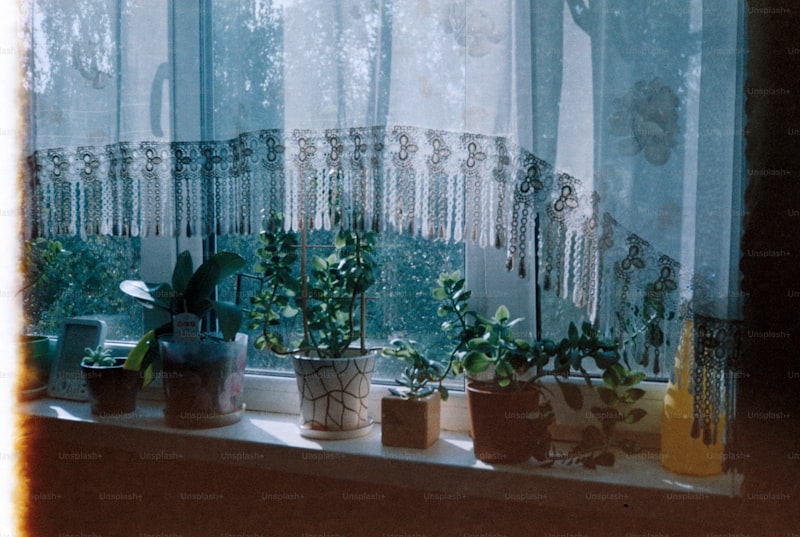Incorporating Plants and Greenery: Transforming Your Spaces into Lush Paradises
Introduction
In recent years, the trend of incorporating plants and greenery into living and working spaces has taken the interior design world by storm. Not only do these natural elements enhance the aesthetic appeal of a room, but they also contribute positively to our mental and physical well-being. This article delves into various ways one can incorporate plants and greenery, the benefits of doing so, and considerations to keep in mind for achieving the best results.
Why Incorporate Plants and Greenery?
Before diving into the methods of incorporation, it's vital to understand why incorporating plants into our spaces is beneficial. Studies have shown that greenery can:
- Improve air quality by filtering toxins.
- Reduce stress and enhance mood.
- Boost creativity and productivity, especially in workplaces.
- Provide a sense of connection to nature, promoting overall well-being.
Types of Plants Suitable for Indoor Spaces
Different plants serve various purposes, and their suitability often depends on the environment. Below is a table summarizing some of the most popular plants for indoor incorporation:
| Plant | Light Requirements | Care Level | Benefits |
| Pothos | Low to moderate | Easy | Air-purifying |
| Snake Plant | Low to bright indirect light | Easy | Very resilient |
| Peace Lily | Low to moderate | Moderate | Beautiful flowers, air-purifying |
| Spider Plant | Bright indirect light | Easy | Great for pet owners |
| Fiddle Leaf Fig | Bright indirect light | Moderate to difficult | Adds a bold statement |
Creative Ideas for Incorporating Plants
Now that we know why incorporating plants is essential, let’s explore some creative methods to integrate greenery into your environment.
1. Vertical Gardens
Vertical gardens, or living walls, are a stunning way to maximize space while adding a lush aesthetic. These installations can be created indoors or outdoors and can consist of a variety of plants. They not only enhance visual appeal but also help improve air quality. Vertical gardens are a fantastic option for homes with limited floor space and can range from DIY pallets to professionally installed systems.
2. Incorporating Plants into Furniture
Another innovative way to incorporate greenery is by integrating plants into furniture. Coffee tables, shelves, or even desks can feature plant holders that harmonize with the space. This approach creates a unified design and brings a natural element into furniture-centric environments.
3. Hanging Planters
Hanging planters introduce an element of whimsy and can be a great way to utilize overhead space. They can be installed in various locations, from kitchen windows to living room corners. Macrame hangers or sleek ceramic pots can elevate the design while allowing plants to capture light effectively.
4. Terrariums and Planters as Centerpieces
Terrariums are captivating options for those looking to add a unique design element. These miniature ecosystems can be placed on tables, shelves, or desks and serve as stunning focal points. Whether it’s a glass globe or a decorative jar, terrariums require minimal maintenance while adding a botanical touch to any space.

Maintaining Your Greenery
Incorporating plants and greenery is not just about placement; caring for them is equally crucial. Here are some considerations for plant maintenance:
- Watering: Overwatering is one of the most common mistakes. Be sure to know the specific water needs of each plant.
- Light: Ensure plants receive adequate light. Some thrive in direct sunlight, while others prefer indirect light.
- Soil Quality: Use the right potting soil that provides proper drainage and nutrition.
Final Thoughts
Incorporating plants and greenery into your living or working space is a fantastic way to enhance aesthetics and promote well-being. The options are limitless, from vertical gardens to beautifully curated terrariums. However, it’s essential to choose the right plants that suit your environment and care for them appropriately. By doing so, you’ll not only create a visually stunning space but also enjoy the numerous benefits that plants bring. Remember, when selecting plants, consider light availability, space constraints, and maintenance level to ensure your green oasis thrives.
In conclusion, the journey of incorporating greenery into your environment is both rewarding and beneficial. Be patient and enjoy the process as you create your personal sanctuary filled with life, color, and tranquility.